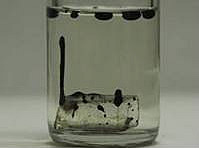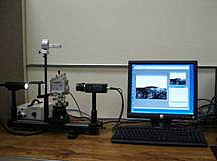This 3-year project began in October 2004 as an effort to identify cost-effective surfactant formulations for EOR in fractured carbonate reservoirs. The motivation for this study is that, with the high oil price environment and tight supplies, there is a strong incentive to deploy new EOR methods such as chemical treatments in carbonate reservoirs, provided research can demonstrate the feasibility of such processes. Fractured carbonate reservoirs generally have poor oil recovery due to poor sweep of the water into the oil-rich matrix blocks. Adding the right surfactants to the injection water will change the wettability of the carbonate reservoir surfaces and alter the interfacial tension so as to increase the aqueous phase penetration into the rock matrix with trapped oil. The oil then released enters the fracture system and is recovered.
Results
The project has developed rapid screening methods to evaluate surfactant formulations for their potential as enhanced oil recovery (EOR) agents for carbonate reservoirs. Expected results are an improved understanding of chemical mechanisms associated with this process and the development of more cost-effective formulations to apply this process in the field.
Researchers performed additional tests, including oil displacement/imbibition tests associated with the study of fundamental mechanisms for oil-wetting on a carbonate surface and then reversing that with a surfactant solution.
The first theoretical studies indicate that the more hydrophobic naphthenic acids (NA) have a greater effect on inducing oil-wet conditions. This work also suggests the wetting effect is independent of the binding energy of a NA on a carbonate surface.
Tests are in progress for designing this process for a typical West Texas fractured carbonate reservoir. Laboratory results demonstrate that some surfactants can recover by imbibition (simple soaking treatments) more than 50 percent of this crude oil initially saturating a 20 milidarcy limestone cores. These same successful surfactants are shown to be compatible with a synthetic field brine (approximately 3 wt percent salinity) at reservoir temperature.
Benefits
This project benefits the industry by identifying a spectrum of surfactant products that may be useful for EOR in fractured carbonate reservoirs. Developing effective, low-cost chemical formulations will allow the commercial application of this technology.
The State and the public benefit of this research is that it provides further impetus for the industry to practice chemical EOR and thereby increase domestic oil supply. This should have a moderating effect on oil prices, plus help improve the U.S. balance of payments.
Summary
Significant accomplishments for this project so far are that the researchers have:
- Developed two methods for the rapid screening of surfactant formulation performance in removing oil from carbonate mineral surfaces. These techniques have been documented in a Topical Report.
- Completed an experimental investigation of mechanisms associated with oil- and water-wetting of carbonate mineral surfaces and presented these results. This has received a favorable peer review.
- Conducted phase behavior/interfacial tension (IFT) studies for relevant surfactant systems.
- Undertaken oil recovery experiments via imbibition with both a model oil and a West Texas crude oil.
- Correlated surfactant properties such as HLB with their oil recovery performance.
Remaining major tasks/future work with the identified better chemical formulations are additional oil recovery tests for the subject crude oil.
The first accomplishment, under Task 1, relates to the challenge of rapidly selecting those surfactants that have the best potential for an EOR process from fractured carbonate reservoirs. There are thousands of surfactants one could evaluate. The screening methods done for Task 1 identifies chemicals best suited to make carbonate surfaces water-wet. This approach allows one to quickly go from hundreds of formulation ideas to a few surfactant types worthy of more detailed study.
The item under Task 2 entails selecting simple “model” chemical systems that probe the chemical mechanisms responsible for good oil recovery performance. Insights from Task 2 narrow further which surfactants received more detailed study. The latter items encompass Tasks 3, 4, and 5, where detailed studies examine the performance of only those surfactants that look promising based on the simple screening tests. These later tasks also involve phase-behavior/IFT measurements to select only the chemicals with good fluid properties when exposed to the reservoir brine and oil. These results, coupled with the previous wetting data, have provided a selected suite of surfactants tested for their ability to recover model and crude oil via imbibition from limestone cores. The final test work with those best surfactants would seek to verify their high efficiency as waterflood additives to improve oil displacement from the matrix portion of carbonate reservoirs.





